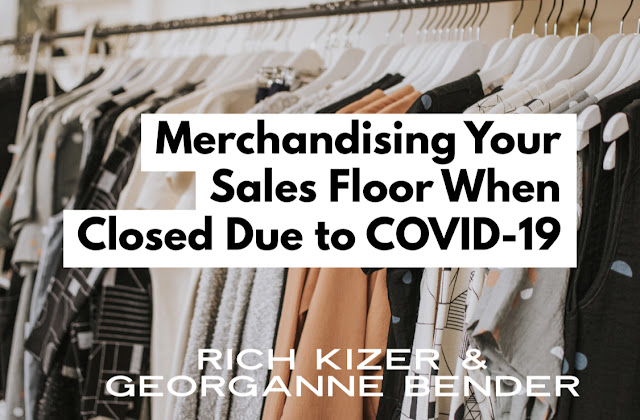Visual Merchandising Manual Kizer Bender

Note: An in-depth version of this post was originally published onMedallion Retail.
VISUAL MERCHANDISING REFERENCE MANUAL 4 ITURES ACCESSORIES SPINNERS ACCESSORIES CORRUGATE DISPAYS DOUBLE 6' SIGN CHANNEL MATERIAL Clear Plastic OVERALL DIMENSION 6' Height 48' Width SHIPPING INFORMATION Double 6' Sign Channel ships in one box, complete with Right & Left Brackets. ITEM # DESCRIPTION WEIGHT 101103 6' Sign Channel 2 lbs. SKILLS (TEAS V) STUDY MANUAL. Students who have taken the TEAS® V at another institution should contact ATI at 1-800-667-7531 to have their score transcript sent to the Becker College Admission Department. Refer to Clinical and Physical/Health Requirements in the Additional Requirements for ALL nursing programs section.
Physical retail is becoming less about the product and more about the experience. As retail anthropologists Rich Kizer and Georganne Bender put it, shoppers “come to your store not just to buy; they come for ideas and inspiration. And they come to be entertained – even when they don’t buy anything; it’s the experience that brings them back.”
But how do you create a store that inspires people to buy and come back?
If you’re asking yourself that same question, keep reading. For this post, we’ve invited Kizer and Bender to share some of their top retail design and layout tips.
For the uninitiated, Rich Kizer and Georganne Bender are experts on generational diversity, consumer trends, marketing and promotion, and everything retail. They are widely referred to as consumer anthropologists because they stalk and study that most elusive of mammals: today’s consumer.
Have a look at what they have to say below.
Create and control the shopper journey
“It’s said that 50 percent of your sales floor is never seen by shoppers, so the job of your layout is to create and control how customers shop the sales floor,” shared Kizer & Bender.
Keep them for easy access.22) Restart your PC and enjoyregarding point 14, i do not choose IE as it will launch the JNLP file directly, other browsers simply download the file to a chosen location. Download mercedes benz wis epc installation instructions. Here gathered two solutions based on customers’ experience:1) Method 1Go to C: programme files/EWA net/config.Find out umcfg.xml.Open it and locate line 50 and 52Change line from30to-1.
According to the duo, controlling that journey starts with having the right store layout. Here are some of the common retail store layouts you can look into.
Grid layout – In this layout, “fixtures run parallel to the walls, so customers typically grab a shopping cart and walk the aisles.” You’ll typically see a grid layout in supermarkets and many big box stores.
Loop/Racetrack Layouts – In this layout, you’ll have a main aisle that circles through the store. Customers would “typically flow to the right and move up and down the aisles in a serpentine manner.”
According to Kizer and Bender, this layout provides “maximum product exposure because the perimeter walls are just as important as the end features. Target and Best Buy are two good examples of stores that utilize a Loop layout.”
Free flow layout – Most specialty retailers would have this layout because it gives you the most freedom. In a free flow layout, fixtures and positioned at angles that allow customers to move around the store. It also provides opportunities to “to romance the merchandise and create unique display vignettes.”
Mind your Decompression Zone
The Decompression Zone is “generally the first 5 to 15 feet inside the front door.” It’s your store’s entry area that customers use to “decompress” or adjust to the new environment.
Shoppers who are in this part of your shop are prone to distractions, so you don’t want to put key products in your decompression zone.
Kizer and Bender recommend that you keep this space open and cluttered. “Floor signs, baskets, class schedules, etc. belong just beyond your Decompression Zone where shoppers are more likely to see them.”
Find your Lake Front Property
“Some areas of your sales floor are more important than others; we call these areas Lake Front Property because a large percentage of sales come from this space,” mentioned the duo.Varcarolis foundations of psychiatric mental health nursing test bank.
“Displays in this area should house new, hot and high margin product, not every day, basic items that are best housed toward the rear of the store. And since 90 percent of customers enter a store and look or turn to the right, the Lake Front Property needs to be merchandised with particular care.”
You can locate your Lake Front Property by implementing Kizer and Bender’s V & Vista Exercise. Here’s how:
Step 1 – From your Decompression Zone, “spread your arms out at shoulder height with your index fingers extended. What’s inside the “V” your arms make is called is the Vista – the area that builds a shopper’s first impression of the store.”
According to them, this area should have speed bumps or displays that enable customers to slow down and refocus. This part of the store should be used to tell shoppers what they can expect to find in your shop. As such, Kizer and Bender recommend using this space for “cross-merchandised groupings of irresistible product.”
Step 2 – Find your Power Walls using the V the formed with your arms. “Start by following your nose down your right arm to the tip of your right index finger – the wall you are looking at is your front right Power Wall,” shared the duo.
This can be a very profitable space. Use to put the spotlight on hot merchandise and update it frequently.
Also, note that this is not the place to put your cash wrap. According to our experts, “your cash wrap should be located at a natural ending point in the shopping experience, on the left side of the store, close to the front, or at the center of the store, about 20’ back from the front door.”

Step 3 – Find your left Power Wall, which should at to the tip of your left index finger. This is a significant space as well, so put a lot of thought when you’re merchandising this area.
Step 4 – Kizer and Bender recommend walking through your entire sales floor and looking for important display areas. Take note of which areas stand out, as they will need to be updated and re-merchandised on a regular basis.
Step 5 – Snap photos. Don’t neglect this step. As Kizer and Bender put it, “the camera will see what you cannot, showing you areas that need attention, holes in displays that need to be filled with merchandise, displays that need signing, and more.”
Final words
And there you have it! Kizer and Bender’s top pointers for creating a winning retail store design. If you’re looking for additional insights, check out their post on Medallion Retail.
Interested in consulting with Kizer and Bender? Check out their official website here.